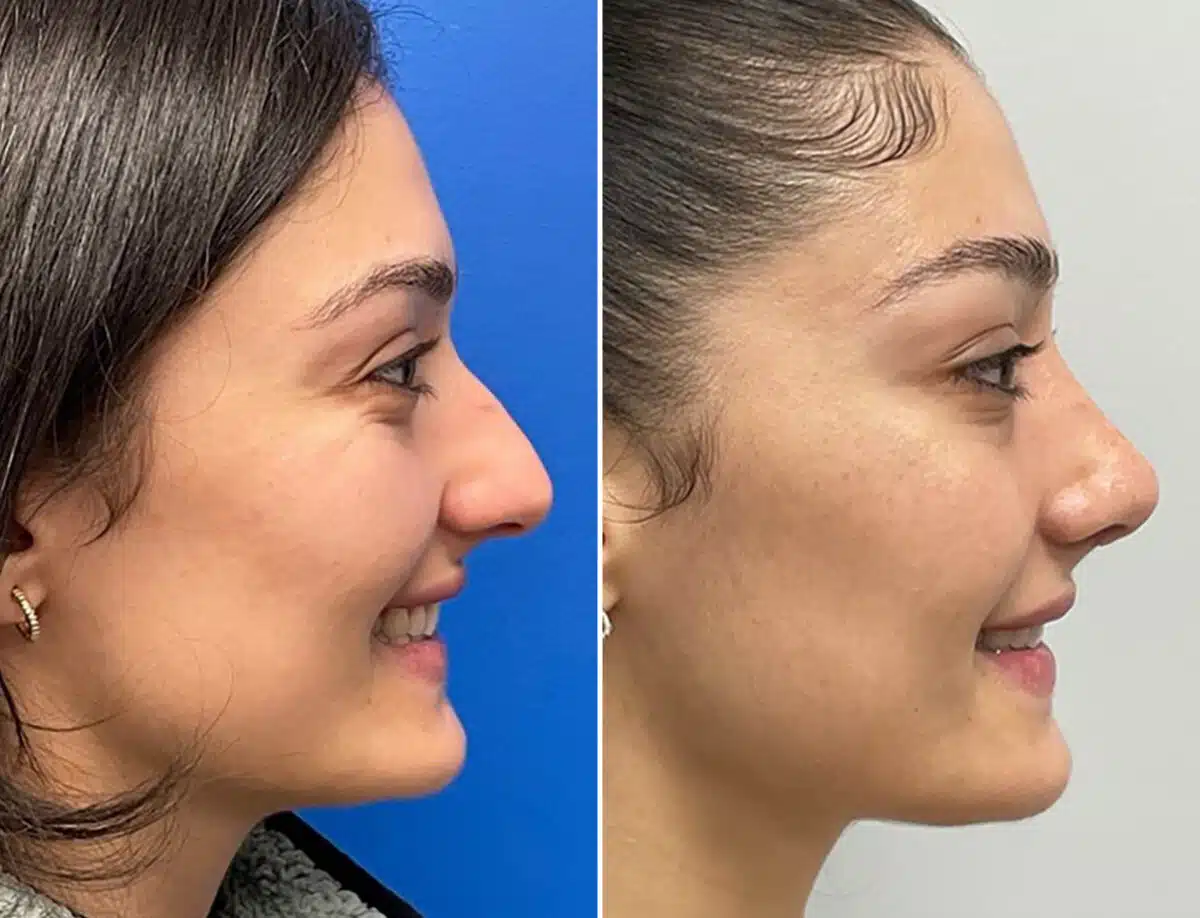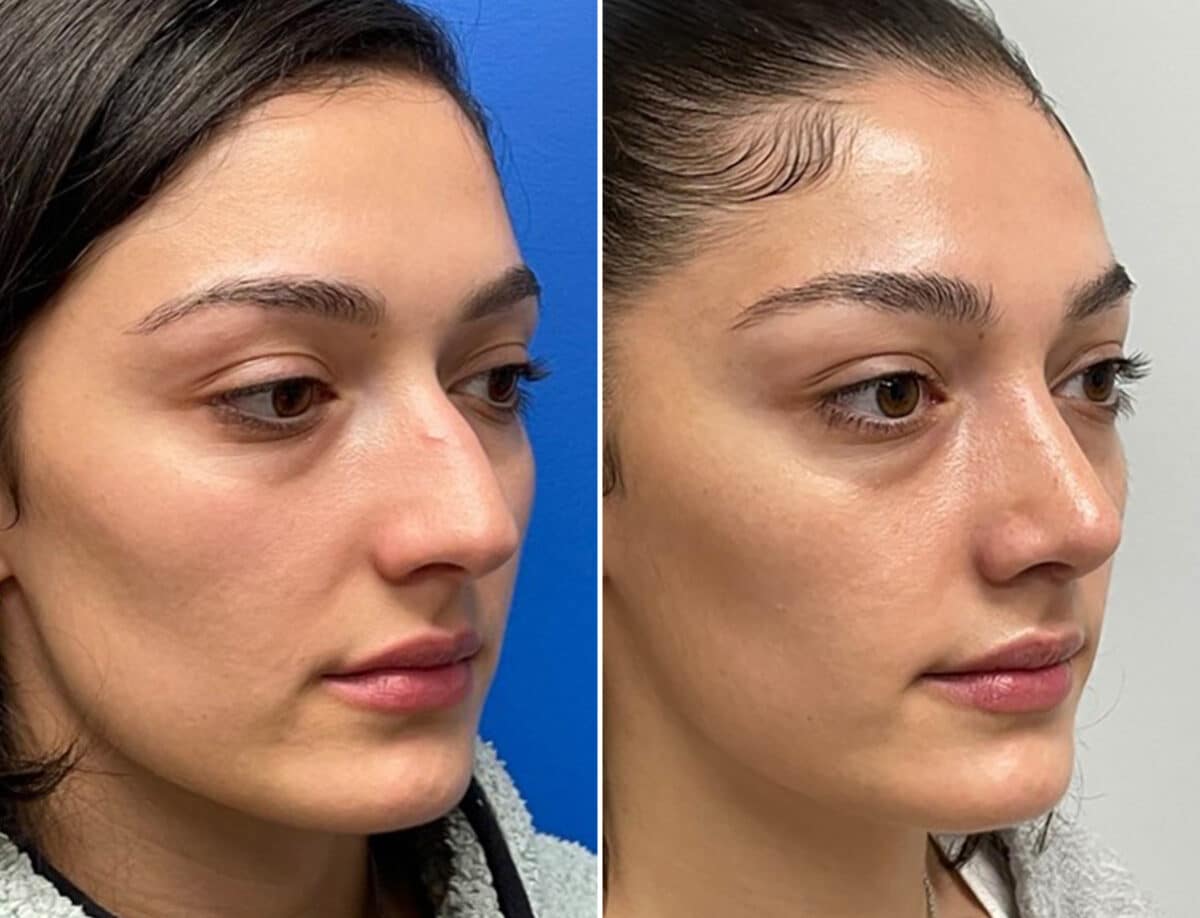Can Nose Surgery Improve Sleep Apnea? What You Need to Know

Can nose surgery fix sleep apnea? Is there such a thing as apnea surgery? Many people searching for nasal surgery for sleep apnea ask these very questions. While rhinoplasty is not considered a standard treatment for sleep apnea or specifically an apnea surgery, it can play a significant role in improving nasal function and potentially easing the symptoms of obstructive sleep apnea. Because breathing issues can arise from anatomical problems in the nose, procedures that correct these problems may help you breathe better, especially at night. In this article, we’ll explore what sleep apnea is, why it happens, and how nasal procedures—like the specialized functional rhinoplasty offered by Dr. Becker—may bring relief to some patients.
Key Takeaways About Nose Surgery and Sleep Apnea
- Obstructive sleep apnea is a condition where blocked airways disrupt sleep.
- Nose surgery can address nasal obstructions like a deviated septum, enlarged turbinates, or nasal polyps.
- Functional rhinoplasty aims to improve both appearance and breathing.
- Dr. Becker is a leading expert in rhinoplasty, focusing on patient comfort and satisfaction.
- A consultation with an experienced rhinoplasty surgeon is essential for personalized advice.
What is Sleep Apnea?
Sleep apnea is a condition in which a person’s breathing frequently stops and starts while they sleep. These pauses, or “apneas,” can significantly disrupt sleep and reduce oxygen levels in the bloodstream. Over time, this chronic lack of restful sleep can lead to more significant health concerns, including daytime fatigue, heart issues, and metabolic problems.
Unlike mild sleep apnea, which might involve occasional breathing disturbances, moderate to severe sleep apnea typically requires medical attention. Common treatment includes CPAP (continuous positive airway pressure) therapy, which keeps the airway open at night, and other treatments may include various forms of sleep apnea surgery. Although rhinoplasty alone is not considered a primary sleep apnea treatment, it may still play an important role in overall airway improvement for some individuals.
Types of Sleep Apnea
Sleep apnea generally falls into three categories:
- Obstructive Sleep Apnea (OSA): The most common type, where the airway is physically blocked, often by relaxed throat muscles, enlarged adenoids and tonsils, or nasal obstruction issues such as a deviated nasal septum.
- Central Sleep Apnea: In this form, the brain fails to send proper signals to the muscles responsible for breathing. This form is less about physical blockages and more about neurological control of respiration.
- Complex or Mixed Sleep Apnea: A combination of both obstructive and central sleep apnea, requiring comprehensive evaluation to determine the best approach.
Symptoms of Sleep Apnea
A number of signs can point to sleep apnea. These symptoms often develop gradually and may go unnoticed if you sleep alone. Before discussing potential surgical procedures or other treatments, recognizing symptoms is crucial. Common signs of sleep apnea include:

- Frequent, loud snoring or gasping for air during sleep
- Daytime sleepiness or fatigue, even after a full night in bed
- Waking up with a dry mouth or sore throat
- Difficulty staying asleep or restless sleep patterns
- Morning headaches or problems concentrating during the day
If you experience these symptoms regularly, it is important to consult a healthcare professional. Conditions like sinus issues or nasal obstruction can exacerbate sleep apnea, which is one reason why nasal surgery for sleep apnea is sometimes considered.
Causes of Sleep Apnea
Sleep apnea can be triggered by various factors that hinder proper airflow. In obstructive sleep apnea, excess tissue in the upper throat, enlarged adenoids or tonsils, a deviated septum, or even changes in tongue and palate positioning can block the airway. Children with sleep apnea often suffer from enlarged adenoids and tonsils, while adults may face issues related to weight gain or narrow nasal passages. For some, sinus infections or structural nasal problems, like a deviated septum or nasal valve collapse, can worsen breathing issues.
Lifestyle factors also play a part. Obesity is a known contributor, along with smoking and excessive alcohol consumption. While nose surgery for sleep apnea may address structural causes, a comprehensive plan might involve the use of CPAP or other devices. Depending on the individual, more invasive outpatient procedures, such as palate surgery or tongue surgery, may be recommended to treat persistent obstructive sleep.
Discover if nasal surgery can help alleviate your symptoms
Book an appointment with Dr. Becker for an expert evaluation.
How Nose Surgery Can Help
For individuals struggling with breathing due to nasal obstructions, functional rhinoplasty can be a valuable component of a broader treatment plan. This procedure aims to correct structural issues in the nose that lead to poor airflow. Examples include a crooked (deviated) nasal septum, enlarged turbinates, or the presence of nasal polyps. By addressing these problems, nose surgery can help reduce nasal blockage, making it easier to breathe and potentially alleviating some symptoms of obstructive sleep apnea.
Sleep Apnea Surgery: The Importance of Addressing Nasal Obstruction
When most people think of sleep apnea, they often think of CPAP machines. However, nasal surgery can also be part of the puzzle and a more permanent solution. Improving airflow through the nose can enhance overall breathing quality, which may reduce the severity of mild sleep apnea symptoms or support other forms of therapy (like CPAP). Though rhinoplasty cannot be called “the best surgery for sleep apnea” in every situation, it can be life-changing for those whose condition is largely influenced by nasal blockages.
For patients whose symptoms go beyond nasal obstruction, sleep apnea and CPAP-intolerance treatments are also available through our ENT specialists in Philadelphia, where Dr. Becker and his team focus on helping people breathe and sleep more comfortably.
The Functional Benefits of Rhinoplasty
Functional rhinoplasty differs from a purely cosmetic nose job because it focuses on breathing function and the internal structures of the nose. While a cosmetic procedure might only change the shape and appearance of the nose, functional types of surgery target issues like:

- Deviated septum correction to align the nasal septum and open congested airways
- Endoscopic sinus surgery to remove obstructions like polyps and improve sinus drainage
- Balloon sinuplasty for patients with chronic sinus problems and mild structural blockages
- Turbinate reduction to decrease enlarged nasal tissues that restrict airflow
By combining these techniques, functional rhinoplasty offers a more holistic approach that can improve day-to-day breathing while maintaining or enhancing aesthetic balance. That’s why some people refer to it as a nose job for sleep apnea—although again, it is not a stand-alone cure for all cases.
Why Choose Dr. Becker for Nose Surgery?
Dr. Becker is a recognized authority in the field of rhinoplasty and nasal surgery. Having dedicated his career to advancing surgical techniques that optimize both the cosmetic and functional aspects of the nose, he is widely respected among his peers and patients alike. At The Rhinoplasty Center, Dr. Becker and his team emphasize:
- Comprehensive Evaluation: Every patient is carefully assessed for nasal obstruction, sinus concerns, and cosmetic goals.
- Personalized Treatment Plans: Each procedure is tailored to the individual, ensuring that both appearance and breathing issues are addressed, whether it be with septoplasty, sinus surgery or any other technique.
- Comfortable Patient Experience: From initial consultation through post-operative care, Dr. Becker’s practice prioritizes patient safety, comfort, and satisfaction.
If you are exploring whether nasal surgery for sleep apnea can help you, scheduling a consultation with Dr. Becker is an excellent first step toward learning about your options and determining the best path forward.
Understanding Nasal Surgery
Nasal surgeries range from minimally invasive outpatient procedures to more comprehensive reconstructive interventions. Functional rhinoplasty may involve general anesthesia or local anesthesia with sedation, depending on the complexity of the correction needed. Some of the possible surgical techniques that may be used include:
- Septoplasty: Correcting the nasal septum to ensure better airflow
- Endoscopic sinus surgery: A minimally invasive way to remove blockage in the sinuses and improve sinus function
- Turbinate reduction: Reducing the size of the turbinates to create more space for air to flow
- Nasal valve repair: Strengthening or supporting the narrowest part of the nasal passage
Recovery times vary based on the extent of the surgery. Generally, patients can expect some swelling and congestion in the first week. Pain is usually manageable with medication, and most people return to light daily activities within a week or two. While improvements in breathing can be felt relatively quickly, full healing may take several months. An overnight hospital stay is rarely needed unless other, more invasive procedures like palate surgery or tongue surgery are required at the same time.
Considerations Before Choosing Nose Surgery for Sleep Apnea
It is important to note that not all forms of sleep apnea can be improved through rhinoplasty alone. If you have significant throat blockage, you might require palate surgery, adenoid or tonsil removal, or additional interventions. Therefore, a thorough evaluation is key to determining whether functional rhinoplasty can provide a meaningful benefit.
Before committing to surgery, you should:
- Undergo a Sleep Study: A formal evaluation can help determine the severity of your sleep apnea.
- Consult with Specialists: A team approach involving an ENT, a sleep specialist, and a qualified rhinoplasty surgeon ensures a personalized treatment plan.
- Understand the Risks: Surgical procedures carry potential risks such as bleeding, infection, or dissatisfaction with cosmetic results.
- Explore Non-Surgical Options: CPAP therapy, oral appliances, or lifestyle changes like weight loss might be a better initial step in some cases.
- Have Realistic Expectations: While a functional nose job for sleep apnea can help nasal obstruction, it may not eliminate the need for other treatments.
Consult with a Rhinoplasty Specialist
If a deviated septum, nasal valve collapse, or chronic sinus issues contribute to your sleep apnea symptoms, a functional rhinoplasty under Dr. Becker’s expert care may offer substantial relief. The key is proper diagnosis and a well-coordinated treatment plan.
If you are ready to learn more about your options, contact The Rhinoplasty Center today. Schedule your consultation, and take the first step toward improved breathing and a better night’s sleep. With Dr. Becker’s extensive experience in both cosmetic and functional nasal procedures, you can feel confident in receiving top-quality care aimed at optimizing both the appearance and health of your nose.
FAQs about Sleep Apnea
Are there alternative therapies available for sleep apnea?
Yes, there are several. Depending on your needs, CPAP remains a leading option. Other treatments include oral appliances, weight loss, positional therapy, and even more complex surgical options like palate surgery or adenoid and tonsil removal. A sleep specialist can guide you toward the appropriate therapy based on your diagnosis.
How long after nasal surgery can I expect to see improvements in my symptoms?
Many patients notice changes in their breathing within the first few weeks, once the initial swelling and congestion subside. However, complete healing and the full benefits of functional improvements may take several months. Follow your surgeon’s instructions for the best outcome.
How can I prepare myself best for a successful outcome from nasal surgery?
First, follow all pre-operative guidelines, such as avoiding certain medications and refraining from smoking. Second, maintain a healthy lifestyle, including proper nutrition and rest, to promote healing. Lastly, set realistic expectations and communicate openly with your surgeon about your goals and concerns. Good preparation not only minimizes risks but also helps achieve the most satisfactory results.
If nasal obstruction is contributing to your sleep issues, take the next step and schedule a consultation at The Rhinoplasty Center. Learn how Dr. Becker’s specialized approach could help you breathe easier and sleep more soundly. Don’t let another night of restless sleep go by—reach out today.

